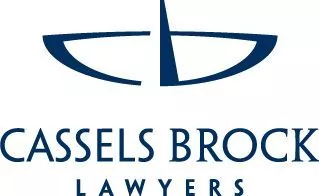On August 28, 2013, the Ontario Securities Commission (OSC) released a progress report on its review of certain prospectus exemptions to facilitate capital raising in Ontario (the Progress Report) as initially set out in OSC Staff Consultation Paper 45-710 Considerations for New Capital Raising Prospectus Exemptions published on December 14, 2012 (the Consultation Paper).
The Progress Report states that after reviewing feedback from a broad range of stakeholders, the OSC has determined to consider further the following capital raising prospectus exemptions:
- An offering memorandum (OM) exemption (the OM exemption)
- An equity crowdfunding exemption
- A family, friends and business associates exemption
- A streamlined version of the existing rights offering exemption currently available across Canada
OM Exemption
An OM exemption, as set out in Section 2.9 of National Instrument 45-106 Prospectus and Registration Exemptions (NI 45-106), is available across Canada except for Ontario. The Progress Report indicates that the OSC will consider adopting the Alberta form of OM exemption which, among other things, limits investments to $10,000 from the public unless the investor is an 'eligible investor'. An eligible investor includes a person whose:
- Net assets, alone or with a spouse, in the case of an individual, exceed $400,000
- Net income before taxes exceeded $75,000 in each of the two most recent calendar years and who reasonably expects to exceed that income level in the current calendar year
The OSC will also consider whether there is a need for additional measures to be included in any OM exemption to be adopted in Ontario, including:
- Whether and how the form of OM could be streamlined so that it is more cost-effective for small and medium-sized enterprises and more user-friendly for investors
- Possible limits on the types of securities offered
- Appropriate investment limits
Equity Crowdfunding
The Progress Report states that the OSC is still considering adopting a form of equity crowdfunding exemption for Ontario. The OSC seeks to strike the right balance between protecting investors while not imposing excessive regulatory costs on issuers and funding portals. A detailed review of the OSC's proposed equity crowdfunding framework is set out in the Consultation Paper.
The Progress Report provides some commentary on the OSC's rationale for providing exemptive relief from certain registration requirements for MaRS VX, a not-for-profit entity that seeks to provide a matching service between accredited investors and social impact issuers through its on line funding portal. See Cassels Brock e-LERT titled OSC Approves Ontario Only Equity Crowdfunding Portal for Accredited Investors – MaRS VX dated August 13, 2013. The Progress Report notes that the MaRS VX decision was highly fact specific and that the OSC continues to review the registration issues relating to funding portals. As a result, the MaRS VX decision should not be seen as a precedent.
Family, Friends and Business Associates Exemption
The private issuer exemption under Section 2.4 of NI 45-106 permits raising capital from certain enumerated categories of investors, including close personal friends, close business associates and certain family members of a director, executive officer, founder or control person of an issuer. The Progress Report indicates that the OSC will consider adopting a broader family, friends and business associates exemption with the goal of harmonization across Canada. Currently, Ontario is the only jurisdiction in Canada that does not have a form of family, friends and business associates exemption in Canada as a stand-alone exemption.
Rights Offering Exemption
In response to feedback from small and medium-sized enterprises, the OSC will also consider revisions to the existing rights offering exemption contained in section 2.1 of NI 45-106 and National Instrument 45-101 Rights Offerings. These revisions may include reducing the current regulatory review period from 10 days to three business days, reducing the exercise period for rights to 10 business days, and improving the ability of issuers to communicate with shareholders through electronic delivery of documents. The OSC will also consider whether the existing anti-dilution provision which limits the number of securities an entity can issue under the exemption to 25% of the entities outstanding securities should also be relaxed.
Other Highlights
The Progress Report provides a summary of comments on the Consultation Paper (Appendix A), an investor survey report (Appendix B) and the OSC's findings from its research involving small and medium-sized enterprises (Appendix C).
The Progress Report notes that the OSC will not be considering the following prospectus exemptions or amendments that it discussed in its Concept Proposal: (a) the investor sophistication exemption; (b) the registrant advice exemption; (c) changes to the existing private issuer exemption; and (d) the re-introduction of the closely-held issuer exemption.
The OSC does not indicate when it will provide its next report or proposed draft prospectus exemptions, if any (i.e., the OSC may do nothing), other than stating that any new or amended prospectus exemptions must be undertaken as part of the OSC rule making process, as set out in the Securities Act (Ontario) which includes at least a 90 day comment period, additional time for the publication of any final rules or amendments and Ministerial approval. Accordingly, if anything is done, it will be in 2014 at the earliest.
A copy of the Progress Report is available here.
The content of this article is intended to provide a general guide to the subject matter. Specialist advice should be sought about your specific circumstances.


